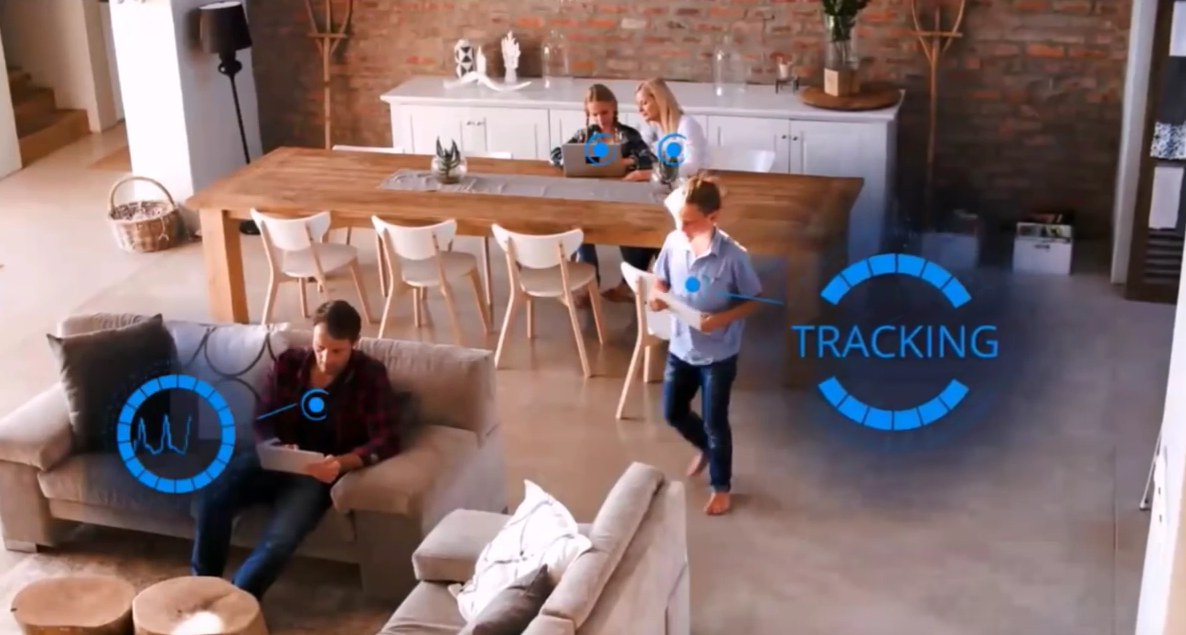 NEWS
NEWS
 NEWS
NEWS
 NEWS
NEWS
The Walabot is an amusingly named sensor for mobile projects (including smartphones) developed by Vayyar Imaging Ltd. that can see through walls, detect moving objects and even measure breathing. This week Vayyar announced the release of the Walabot API along with several examples that can be implemented with the Walabot SDK.
Mobile phones already come with impressive cameras (for their size) which has created a revolution in personal imaging capability: smartphones can be used to identify objects, read QR codes or even provide real-time augmented reality. Unlike a camera, the Walabot doesn’t need light to see, it uses a multi-antenna radar setup to “see” up to 5 meters and it’s pretty impressive with what it can do.
“Walabot instantly turns a smartphone into a powerful 3D-imaging system at your fingertips. Our advanced technology lets people see all kinds of things hidden in the world around them, adding yet another dimension to the way people use smart devices today,” said Raviv Melamed, CEO and cofounder, Vayyar Imaging, in a press release. “Walabot makes highly sophisticated imaging technology approachable, affordable and usable for everyone. It can help the blind avoid obstacles, sense–and alert you–if your mother or father has fallen in the shower, help your robot become autonomous, and much more.”
The Walabot website boasts that the device is a “3D imaging sensor” that can see through solid objects–not quite X-ray vision, but it does make a high fidelity stud and pipe finder–track movements in its field of “vision,” and measure movement speed–using a doppler radar technique.
Interested developers can purchase the sensor hardware (SDK and API included) right now on pre-order, with the expectation that hardware will ship in late April or May for U.S. and U.K. customers. The hardware comes in three stages the Starter Kit at $99 for pre-order ($150 normally); the Maker kit at $249 for pre-order ($300 normally); and finally the Pro kit at $599 for pre-order only.
The Starter Kit is the sensor only (small enough to fit in a smartphone or any mobile platform) that comes with a three antenna array that has limited capabilities. The Maker kit version upgrades to a 12 antenna array, which is capable of pople tracking and distance/depth measurement. Finally the Pro kit supports an 18 antenna array making it capable of seeing through walls, high fidelity doppler tracking and numerous other functions. The Pro kit also features a smartphone case that fits many standard models, providing a smartphone with all the abilities of the Walabot.
Developers looking to make use of the Walabot 3D sensor have access to a vast array of documentation including tutorials on the SDK and API version 0.9.4 online. There is also a mailing list available for signup, participants have a chance to win free dev kits, get access to the SDK and can find discounts on the sensor.
Currently the SDK has only been released for Windows, but Android and Linux support is planned.
Walabot SDK libraries work with the C/C++ and C# programming languages; however Java is planned for release soon. The SDK also contains shared libraries with a defined API that can be used to link using other languages.
The frequency range of the radio array is between 5Ghz and 10Ghz and it can provide a framerate for 3D imaging of approximately 5 frames/second on for most applications. Although this depends heavily on the number of antennas and the underlying processing power of the device running the software.
With the SDK and hardware, developers could couple a mobile camera with Walabot’s radar 3D imaging capabilities to provides a considerable extra information. The use of Walabot in augmented reality applications could provide, as described by its co-founder, “yet another dimension” to mobile and other applications.
Software used with a single camera can guess speed and distance based on what it can see, but a radio system system such as Walabot inherently measures distance and speed of objects in its cone of “vision.” By coupling Walabot and the camera a developer could overlay distance/speed information over real-time and recorded video adding just that extra dimension for any number of purposes.
The tutorial code for Walabot’s SDK includes examples for doing object motion detection, breathing detection and in-wall detection of pipes and wires.
Going further, the Walabot website suggests the sensor is even sensitive enough to watch a person’s breathing and potentially detect heart rate. Obviously this could have useful medical and fitness applications–or some enterprising developer could make a cell phone mounted lie detector…
The possibilities for 3D imaging at a mobile scale affect not just mobile devices and medical devices but also Internet of Things, drone vision and autonomous vehicles.
Support our mission to keep content open and free by engaging with theCUBE community. Join theCUBE’s Alumni Trust Network, where technology leaders connect, share intelligence and create opportunities.
Founded by tech visionaries John Furrier and Dave Vellante, SiliconANGLE Media has built a dynamic ecosystem of industry-leading digital media brands that reach 15+ million elite tech professionals. Our new proprietary theCUBE AI Video Cloud is breaking ground in audience interaction, leveraging theCUBEai.com neural network to help technology companies make data-driven decisions and stay at the forefront of industry conversations.